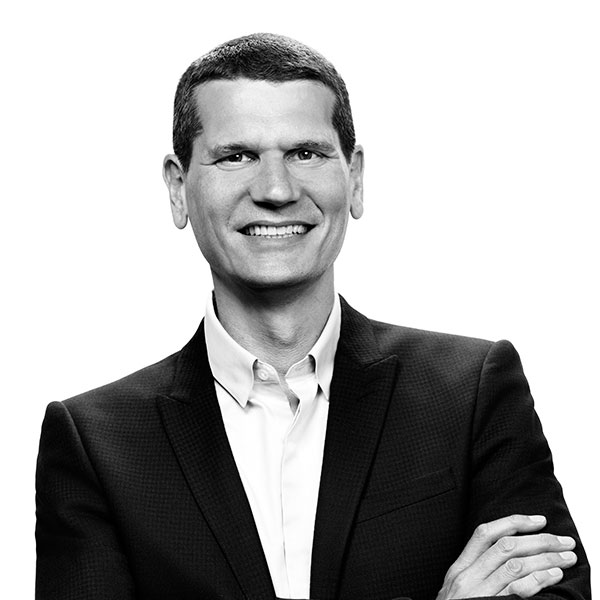by: AIA New York
Chris Cooper, FAIA, works at the intersection of architecture and art. Embracing color, light, texture, and landscape, he creates abstracted and emotive environments that engage both users and the public realm. As a Design Director at Skidmore, Owings & Merrill, Cooper leads an integrated studio in the realization of significant buildings here and abroad. Previously, in a seven-year partnership at Cooper Joseph Studio, he refined his immersive approach at a more intimate scale with award-winning projects for private clients, arts and civic organizations, and helped to burnish more prominent institutional identities in the process. Some measure of Chris Cooper’s contribution can be gauged from the 24 AIA design awards conferred at national, state and local levels.
The technology, transparency, and changeability of glass and light are important components of Cooper’s architecture. At the historic Museum of the City of New York he created a precise 3-dimensional grid of motion-activated LED lights. Starbursts form, dissolve, and reconfigure as visitors ascend the museum’s (previously little used) curved stair. Similarly, the reflective glass tower at 7 World Trade Center provides an ever-changing focus that glows outside and in, day and night, on the skyline and kinetically on the street. The 52-story building is the result of Cooper’s collaboration with artists, engineers and specialist fabricators: architecture at the intersection of art. 7WTC is the first ever LEED Gold certified core-and-shell building, and set new standards of achievement for life safety, sustainability, curtain wall, and detail resolution.
This year, the Jury of Fellows of the AIA elevated Cooper to its prestigious College of Fellows in the first category of Fellowship, which recognizes architects who have “Promoted the aesthetic, scientific, and practical efficiency of the profession,” according to the organizations’s definition. Now among the AIA membership’s three percent distinguished with Fellowship and honorary Fellowship, Cooper was recognized at the New Fellows Reception hosted by AIA New York and was honored further in June at an investiture ceremony at the AIA Conference on Architecture in New York City.
Q: What is your proudest achievement, as an architect, or your favorite project you’ve worked on?
A: 7 World Trade Center was a tremendously satisfying project on many levels, from start to finish. As the first post-9/11 building in the World Trade Center complex, we aspired to a building with the gravitas appropriate to both the city and the nation. This was a project where everyone—architects, artists, engineers, and technical experts—all came together and put forth their best. The precisely machined tower was a benchmark of collaboration and set the tone for future development. I look at the building now, a decade later, in the greater context of WTC build-out and am gratified by what it achieved.
Q: What is your earliest memory of experiencing architecture?
A: When I was five years old, my family lived in London. We traveled throughout Europe that year and my mother pulled us into every cathedral in each town we visited. I recall very little of the specifics, but have always remembered the sensation of those massive spaces that were so carefully crafted to evoke a visceral response.
Q: What is influencing your work the most right now?
A: I think we are challenged not to give in to the moment but to think long term and find solutions of enduring relevance. We work in a chaotic environment of constant change, so it becomes increasingly important to create spaces that offer a sense of calm, a kind of “soulful” architecture that provides respite from the trials of modern life. I am attracted more than ever to integrating natural materials and landscape elements into our projects.
Q: What are you working on right now, or what is your next big project?
A: I am working on a GSA research building for the Department of Transportation in Cambridge, adjacent to MIT. This part of town is transforming rapidly into a hub of innovation so the building has great aspirations to achieve a highly efficient, performance-driven architecture that will both signal and enhance the research program it houses.
Q: What does being a Fellow mean to you?
A: I believe Fellowship is a potent reminder that our daily work matters and that we have the responsibility to join together with purpose to build a better future. I am immensely honored to be recognized by my peers.
Editors’ Note: This feature is part of a series celebrating the 28 members of the American Institute of Architects (AIA) New York Chapter that have been elevated to the AIA College of Fellows in 2018, an honor awarded to members who have made significant contributions to both the profession and society. Learn more about Fellowship here.













